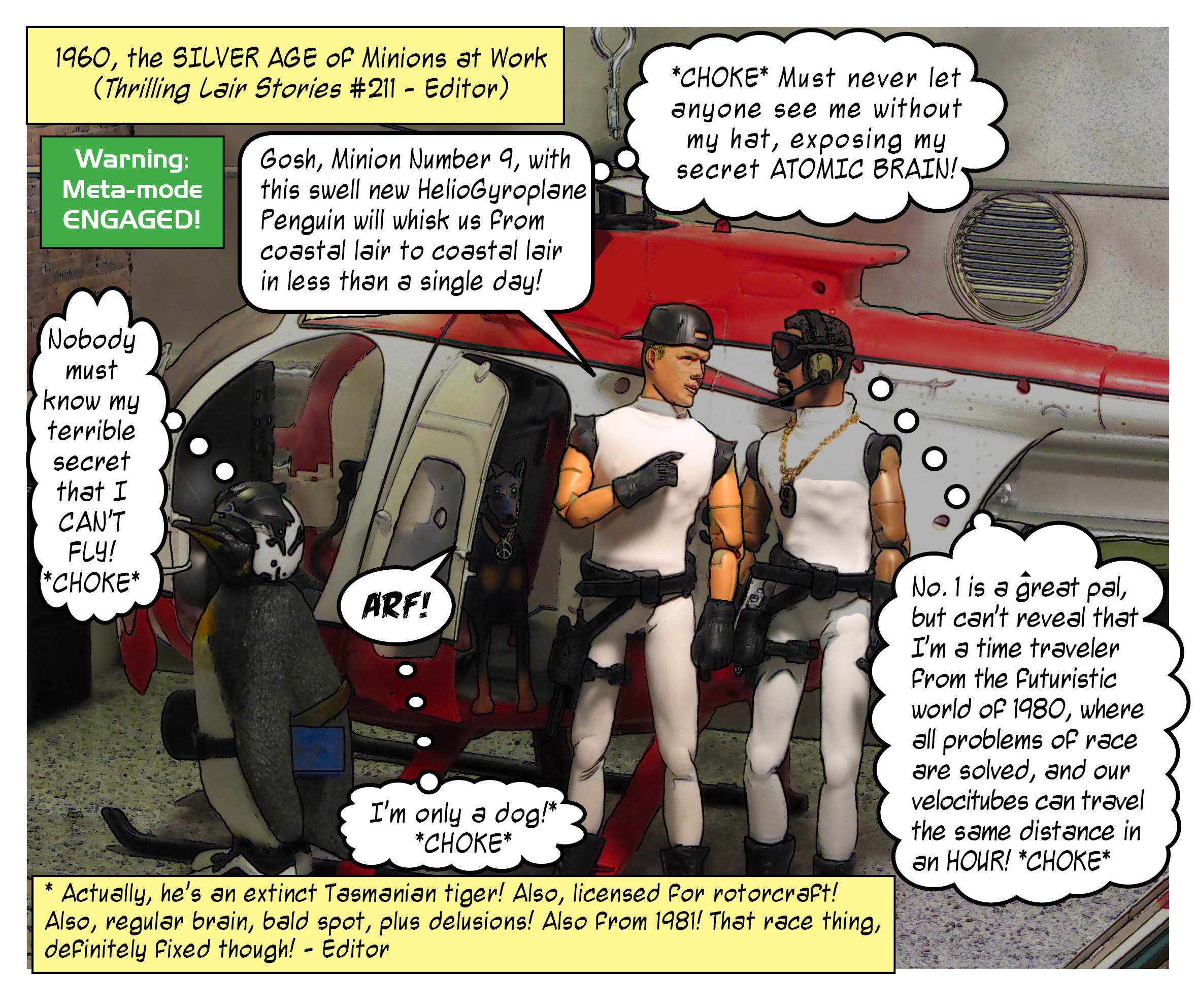Silver Age
Though it’s only a single panel using older photography, a lot of work went into this comic. I’ve been reading a lot of stuff about silver-age DC comics (comics between 1956 and 1970) in the last week or so. These are the comics I grew up with, and I loved it all.
DC Comics was a very crazy place in those days. It was all about sales, and sales were all about the cover. DC’s editors had selling comics down to a science. They watched carefully for any “hook” that could be used to produce higher sales. For example, somebody noticed that comics with gorillas on the cover sold better, and suddenly gorillas were EVERYWHERE. Characters were battling gorillas, changing into gorillas, and in the case of Superman’s pal Jimmy Olsen, MARRYING gorillas!
The apex of the gorilla craze has to be villainous, super-strong, telepathic “Gorilla Grodd,” who has become a staple of the DC universe, starting with the Flash, but even battling Superman and the Justice League of America. He’s still around as a fixture over the last couple seasons of TV’s “The Flash!”
But beyond gorillas and other showy gimmicks, the hook was often some strange going-on or unbelievable twist or secret that twisted characters, often by way of their thought balloons, into melodramatic knots. The cover told a story, or at least, the hook for a story, and left some dangling question or mystery that just HAD to be answered by picking up the comic, and most probably, buying it! Why is Superman dressed as a witch-doctor? Why is Jimmy Olsen turning into a giant turtle man? How has Batman been made thin as paper, yet still alive as he starts to blow away? Why has the flash been turned into a human puppet? And for that matter, why is a young Clark Kent being grabbed by a giant gorilla dressed in a Superboy costume?
Anyway, these things infect your brain very quickly, and I started to wonder what a “Silver Age” Minions at Work panel would look like. I did some tricky work in Corel Paintshop Pro to pull this off. Multiple layers were used, colors were enhanced, detail and noise was reduced, and effects filters were used to find and enhance outlines to give the picture more of a drawn look. But I ended up going in and doing lots of touch-up by hand, removing noise the filters had picked up, and drawing in many of the lines, especially around the characters, by hand. I could have done more, but eventually it was good enough, and sometimes the roads must roll.
This was a lot of fun, and I might try it again, maybe in more of a comic cover format, and maybe with a gorilla involved! But don’t expect it as an every-day thing. Too much work!


This was awesome! I love the over-explainong though bubbles!